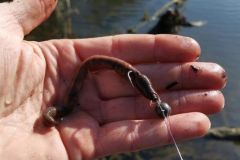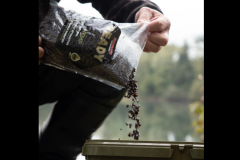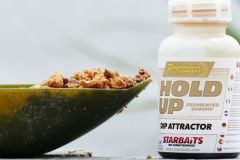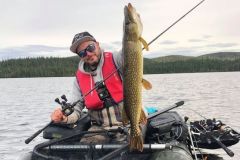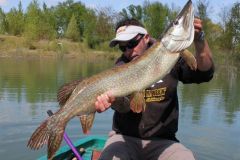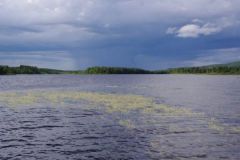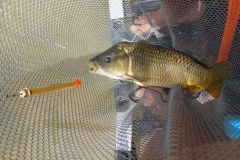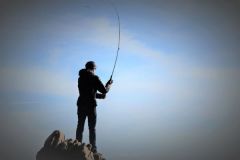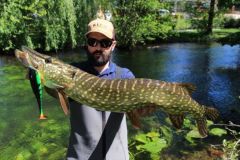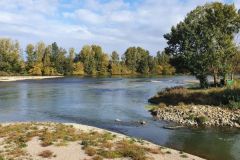Late summer conditions
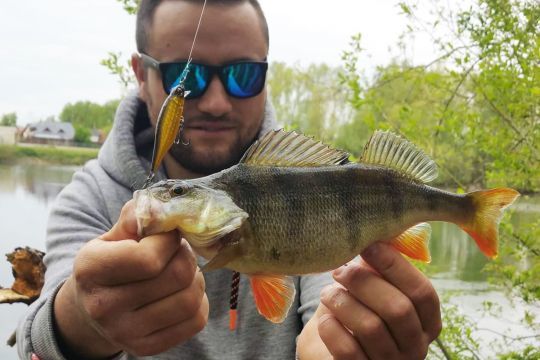
Late summer is marked by the warmest and often lowest water of the year. Seagrass beds are at their peak, providing a rich habitat for both predators and forage fish. The latter have reached adult size, and many of them have known nothing else in their young lives but the beautiful summer! It's going to be a rude awakening!
The limiting factor for a body of water is precisely the heat, and hence the lack of dissolved oxygen in the water. Fish adapt to this by diving into the heart of the weed beds, diving deeper and hunting in the evenings and mornings. The long days offer extended periods of dawn and dusk.
Everything changes
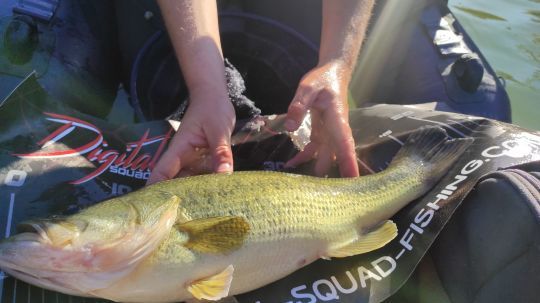
But then the weather turned for the worse, and thunderstorms replaced the immense blue sky. Heavy rain, wind and a sharp drop in barometric pressure reshuffled the deck on the lake. The water temperature drops slightly, but above all the wind mixes the previously stratified water and infuses it with oxygen. These events will destabilize the forage fish, cloud the water and make predation much easier. Beware of the calm after a storm, especially if the sun returns immediately.
The shorter days will begin to force predators to take advantage of the day/night transition more intensely. Basically, as the morning and evening strike is shorter, pike and black bass will have to make the most of it and lower their inhibition to seize any form of opportunity.
How can you make the most of it?
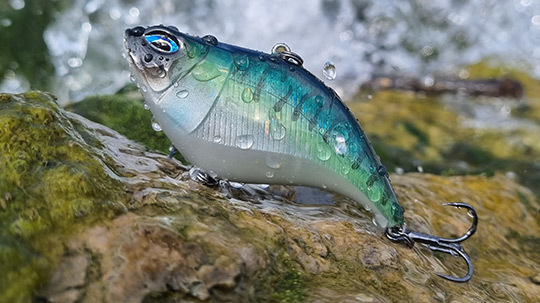
Pike, black bass and even perch are driven by several factors to intensify their feeding activity at this pivotal time. The first thing to do is to fish these transitional moments. Before and during a rain shower is undoubtedly the best opportunity. Be careful not to stay on the water during a thunderstorm - it's very dangerous! Take advantage of windy, cooler days. And of course, mornings and evenings are the best times. In fact, just avoid calm, sunny days.
Decoy strategy
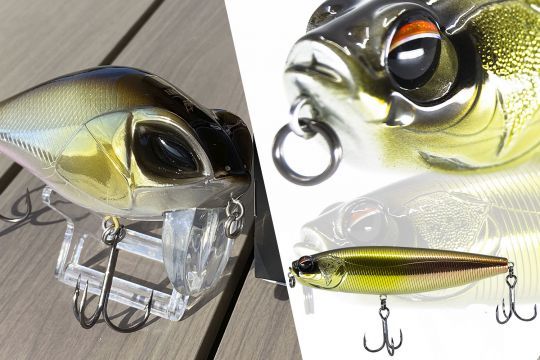
As noted above, the fish are active and on the prowl if you time it right. It's now or never to indulge yourself and fish with surface lures. Stickbait in open water and along weedbeds, buzzbait in deadwood edges or wakebait above submerged weedbeds.
Since the fish are active, you might as well cast wide and get noticed with an attention-grabbing lure. I'm thinking of crankbaits in general, but lipless in particular are renowned for being a good autumn lure. Being sinking, lipless allow you to adapt to the depth of prospection without changing lure: just let it sink a little longer to fish deeper.
The best spots
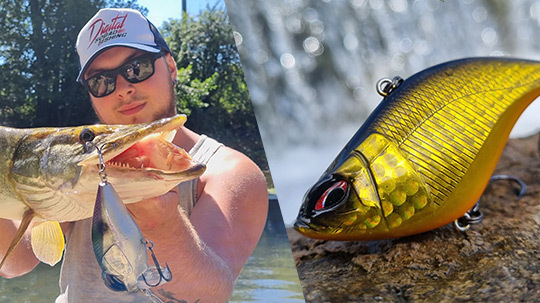
As at any other time of the year, grass beds and other aquatic plants are the areas to prospect first. After a shower or a cool-down, it's best to look for shallow areas, as these will be most affected. Be careful not to give in to the temptation to fish on the windward side of the lake. It's more pleasant, but the lee shore will have water richer in oxygen and therefore more activity.
Some bodies of water, such as large rivers or dammed lakes, have no grass beds or shallows. In rivers, we look for areas with the most current. With the summer drought, the current slows down. So it makes sense to look for areas with the most current. In a reservoir, the first criterion will be the wind, followed by the arrival of rivers or tributaries in the lake. The combination of the two is even better.
Last tip
Bass and pike have spent two months in warm waters and had it far too easy; it's time for nature to reshuffle the deck, and this is our chance to get a better game in our hands. If there's one piece of advice left: get out on a rainy day, it's not as tough as winter, and surface attacks will leave you with a memory that rain can't wash away!




